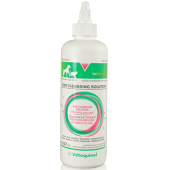It’s official: your cat has fleas. Whether they’ve hopped onto your pet from another animal or from the outdoors, it’s only a matter of time before they start settling into your couch, mattresses and carpet around the house. To get rid of these undesirable parasites, here’s what you need to do.
Why cat fleas are persistent parasites
Fleas that cling to your cat are only the tip of the iceberg. A single female flea can lay up to 50 eggs per day, that can hatch just two days later. These eggs and larvae look for warm, humid places (such as carpets, fabrics, cracks and crevices in the floor, or the backyard during mild weather) until they reach maturity. Then they’ll hop back on to your pet to start the whole cycle again. Even if you apply a flea treatment to your cat, the real fight is ridding your house of the countless bugs in hiding.
Vacuum away cat fleas
Use a powerful vacuum to clean all carpets, upholstery, floors and mattresses daily for at least one month. When you’re finished, throw away the vacuum bag or wash the vacuum canister with warm water and soap. Wear gloves to avoid coming into direct contact with your uninvited guests. These precautions will help you keep immature fleas under control until the adult ones eventually die, which can take up to 25 days.
Use heat
Sustained temperatures above 60°C are lethal to adult cat fleas, so hot water is your weapon of choice. At least once a week, wash all bedding (including your cat’s) and cushions using hot water, then machine dry at the highest possible temperature. Use a steam cleaner to thoroughly clean carpets, sofas and upholstery.
Treat your pets
Make sure your cat and all other pets in the home receive proper flea treatment, or else all of your cleaning efforts will be in vain. Many parasite prevention products are available (such as flea collars or tablets). Topical application parasiticides are a commonly used option to provide efficient protection against a broad range of bugs, including ticks, mites and heartworms, in addition to fleas.
Treat the environment
If the problem persists, you may want to add chemical treatments. Make sure all pets and family members are out of the house before applying a flea spray on all carpets and surfaces. The product used should include both permethrin (to kill adult fleas) and methoprene (to destroy eggs and larvae). Wait until the spray has thoroughly dried before letting anyone back in the house. If your cat is allowed outdoors, treat your lawn with a fertilizer containing insect control as an additional safety measure.
Call in the flea control experts
Be patient: it may take several months to completely rid your house of fleas. If it feels as if you’re not making any progress or if the infestation persists, you might need to hire a professional exterminator to finish the job.






